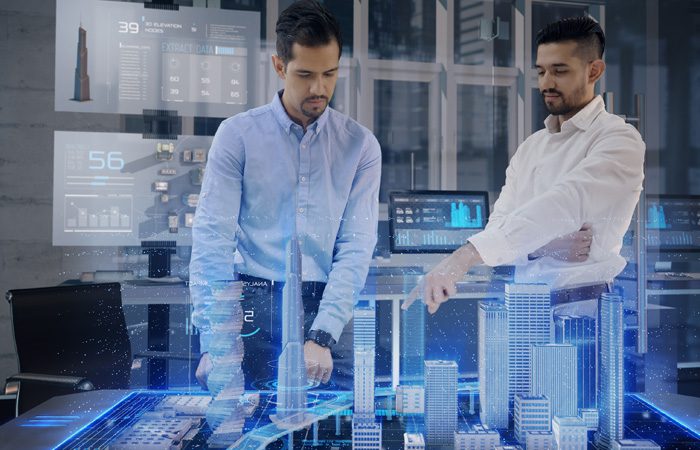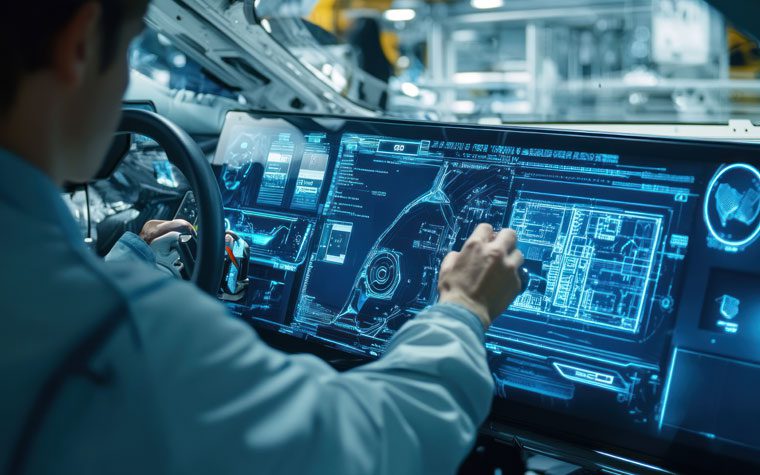
10 Latest Trends in Conceptual Design and Visualization in BIM
In the architecture, engineering, and construction (AEC) industry, Building Information Modeling (BIM) has revolutionized the way projects are designed, constructed, and managed. At the heart of BIM lies conceptual design and visualization, where ideas take shape and are transformed into compelling visual narratives that guide the entire project lifecycle.
As technology continues to advance and industry practices evolve, let’s delve into the latest trends shaping conceptual design and visualization in BIM, and the profound implications they hold for the future of the AEC sector.
- Parametric Design and Generative Modeling
Parametric design, driven by algorithms and mathematical parameters, empowers architects and designers to explore a multitude of design iterations rapidly. Integrating generative modeling techniques within BIM platforms enables the creation of complex, data-driven designs that respond dynamically to various inputs such as site conditions, environmental factors, and user preferences. This trend fosters innovation, enhances design exploration, and optimizes decision-making processes, ultimately leading to more efficient and sustainable built environments.
- Augmented and Virtual Reality (AR/VR)
Augmented and virtual reality technologies are revolutionizing how stakeholders engage with BIM models during the conceptual design phase. By immersing users in immersive virtual environments, AR and VR enable real-time visualization, simulation, and interaction with 3D models at scale. This immersive experience facilitates better understanding, collaboration, and decision-making, empowering designers, clients, and project teams to explore designs in context and identify potential issues before construction begins, thus minimizing risks and optimizing project outcomes.
- Real-Time Rendering and Visualization
Real-time rendering engines have democratized the visualization process, enabling designers to produce high-fidelity, photorealistic visualizations of BIM models in real-time. By harnessing the power of GPU-accelerated rendering and physically-based rendering (PBR) techniques, designers can create immersive, lifelike visualizations that convey design intent with unprecedented realism and detail. Real-time visualization enhances communication, fosters stakeholder engagement, and facilitates informed decision-making throughout the design and approval process, accelerating project timelines and reducing costly revisions.
- Integration of Environmental Analysis
Sustainability is increasingly becoming a paramount consideration in architectural design. BIM platforms now integrate advanced environmental analysis tools that enable designers to evaluate the environmental performance of their designs early in the conceptual phase. From daylight analysis and energy simulation to thermal comfort and solar exposure studies, these tools provide actionable insights that inform design decisions, optimize building performance, and minimize environmental impact, aligning with sustainable design principles and regulatory requirements.
- Collaborative Design Platforms
Collaboration lies at the heart of successful BIM implementation. Emerging collaborative design platforms leverage cloud computing and real-time collaboration features to facilitate seamless communication and coordination among multidisciplinary project teams. These platforms enable architects, engineers, contractors, and stakeholders to collaborate in real-time, share design data, track changes, and resolve conflicts collaboratively, fostering a culture of collaboration, transparency, and accountability that drives project success and innovation.
- Mobile and On-Demand Visualization
Mobile technologies are empowering designers and stakeholders to access and visualize BIM models anytime, anywhere, using handheld devices such as smartphones and tablets. Mobile BIM applications enable on-demand access to project data, models, and visualizations, empowering stakeholders to make informed decisions on the go, streamline communication, and facilitate remote collaboration. This trend promotes flexibility, accessibility, and efficiency, enabling project teams to stay connected and productive regardless of their location or device.
- Data-Driven Design Decisions
BIM generates vast amounts of data throughout the project lifecycle. Leveraging data analytics and machine learning algorithms, designers can extract valuable insights from BIM data to inform design decisions, optimize performance, and predict outcomes with greater accuracy. By analyzing historical project data, user behavior patterns, and environmental factors, designers can identify trends, patterns, and correlations that guide design optimization, risk mitigation, and value engineering, driving innovation and continuous improvement in the design process.
- Digital Twin Integration
The concept of digital twins, virtual replicas of physical assets, is gaining traction in the AEC industry. By integrating BIM models with real-time sensor data from buildings and infrastructure, digital twins enable predictive maintenance, performance monitoring, and lifecycle management throughout the asset’s lifespan. This convergence of BIM and digital twin technologies enhances design validation, facilitates facility management, and enables data-driven decision-making, unlocking new opportunities for innovation and sustainability in the built environment.
- Artificial Intelligence and Automation
Artificial intelligence (AI) and machine learning (ML) are revolutionizing how BIM models are created, analyzed, and optimized. AI-powered algorithms automate repetitive tasks, streamline design workflows, and generate design alternatives based on predefined objectives and constraints. From automated model generation and optimization to predictive design analysis and cost estimation, AI-driven tools augment designers’ capabilities, improve productivity, and enable faster, more informed decision-making, driving efficiency and innovation in conceptual design and visualization.
- Emphasis on User Experience and Accessibility
As BIM becomes more prevalent in the AEC industry, there is a growing emphasis on enhancing user experience and accessibility. User-centric design principles and intuitive interfaces ensure that BIM platforms and visualization tools are easy to use and navigate, regardless of users’ technical expertise. Moreover, accessibility features such as multi-language support, screen reader compatibility, and inclusive design practices promote diversity, equity, and inclusivity, ensuring that BIM technology is accessible to all stakeholders, regardless of their abilities or background.
Therefore, the latest trends in conceptual design and visualization in BIM are reshaping the future of the AEC industry, driving innovation, sustainability, and collaboration. By embracing parametric design, AR/VR technologies, real-time rendering, environmental analysis, collaborative platforms, mobile visualization, data-driven decision-making, digital twin integration, AI automation, and user-centric design principles, stakeholders can unlock new possibilities, optimize project outcomes, and build smarter, more resilient built environments that enrich the lives of people and communities worldwide. As we continue to push the boundaries of technology and creativity, the future of BIM holds boundless opportunities for innovation and transformation in the AEC sector.


